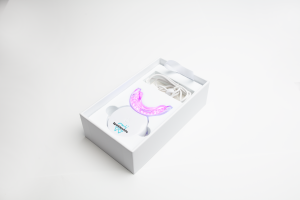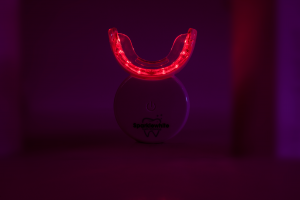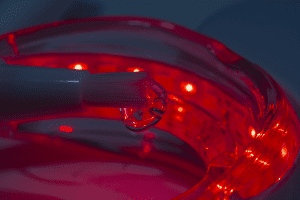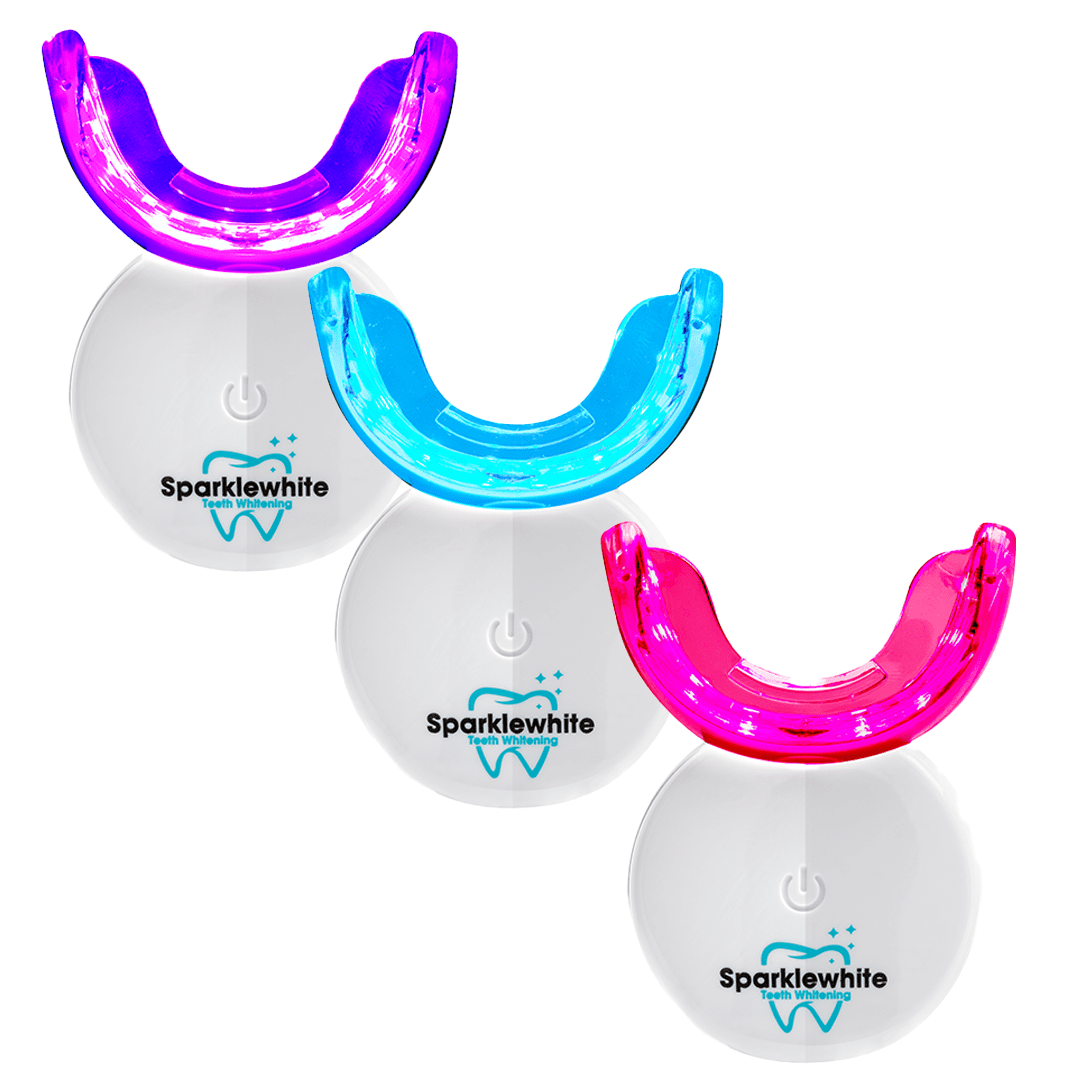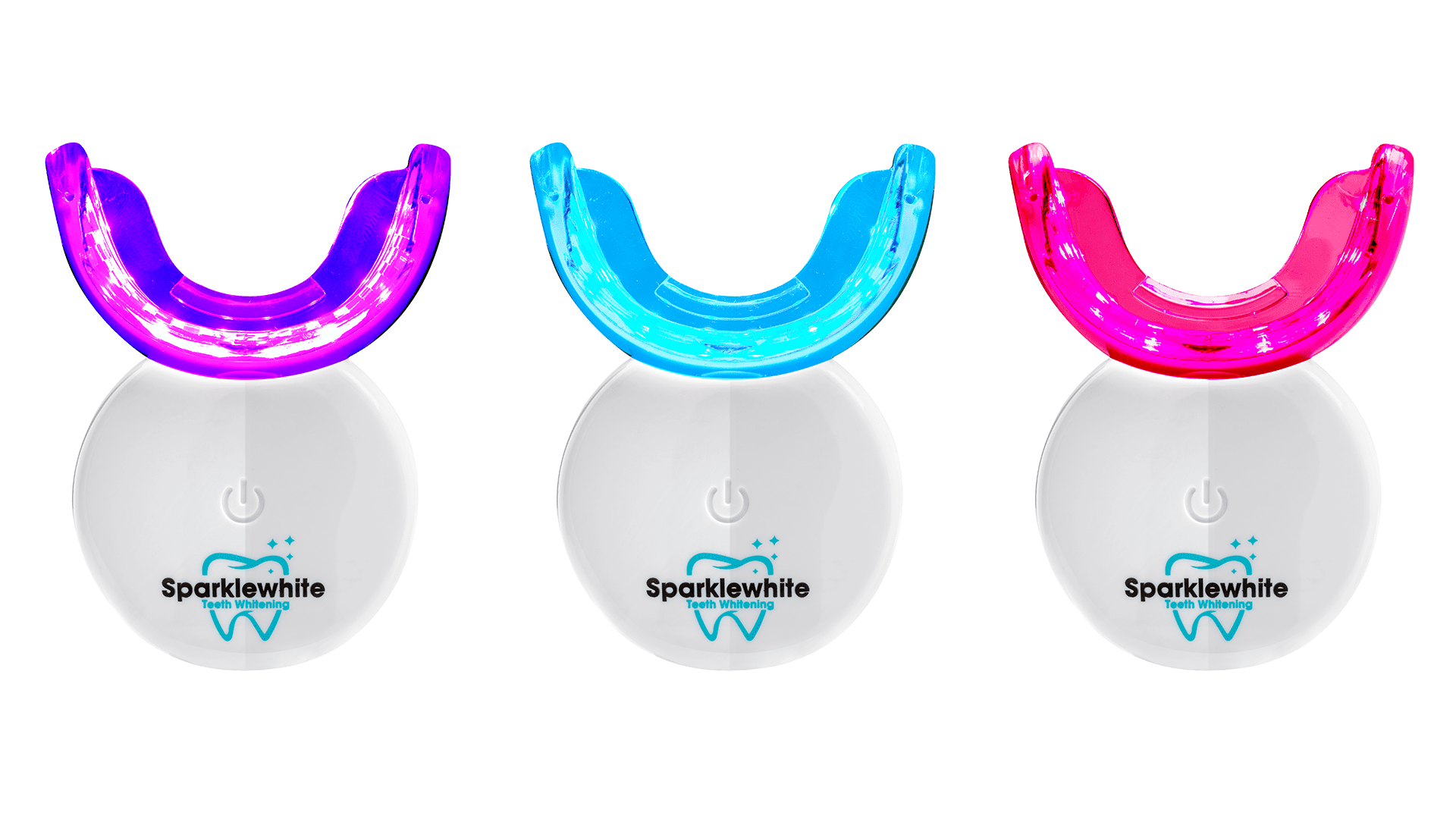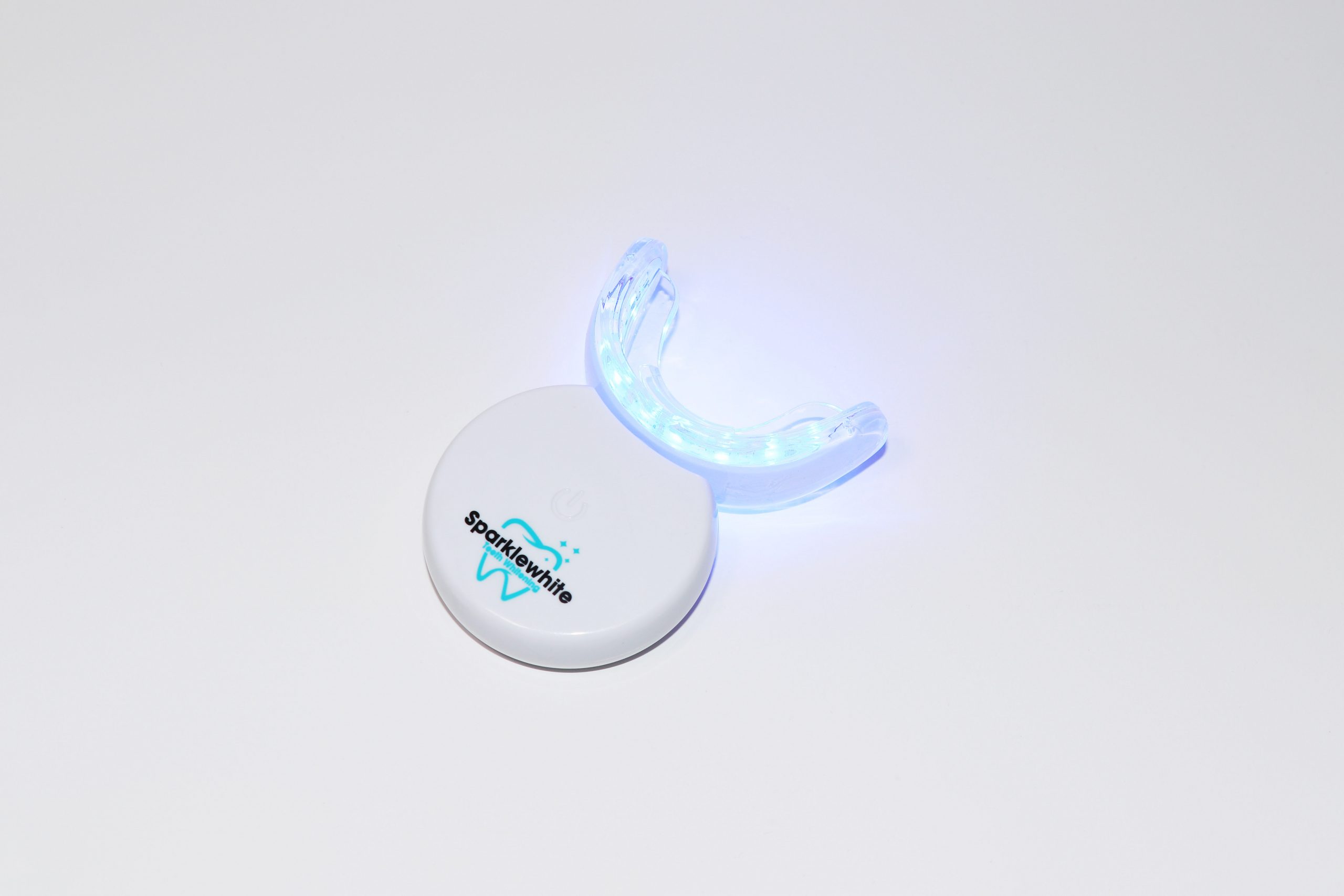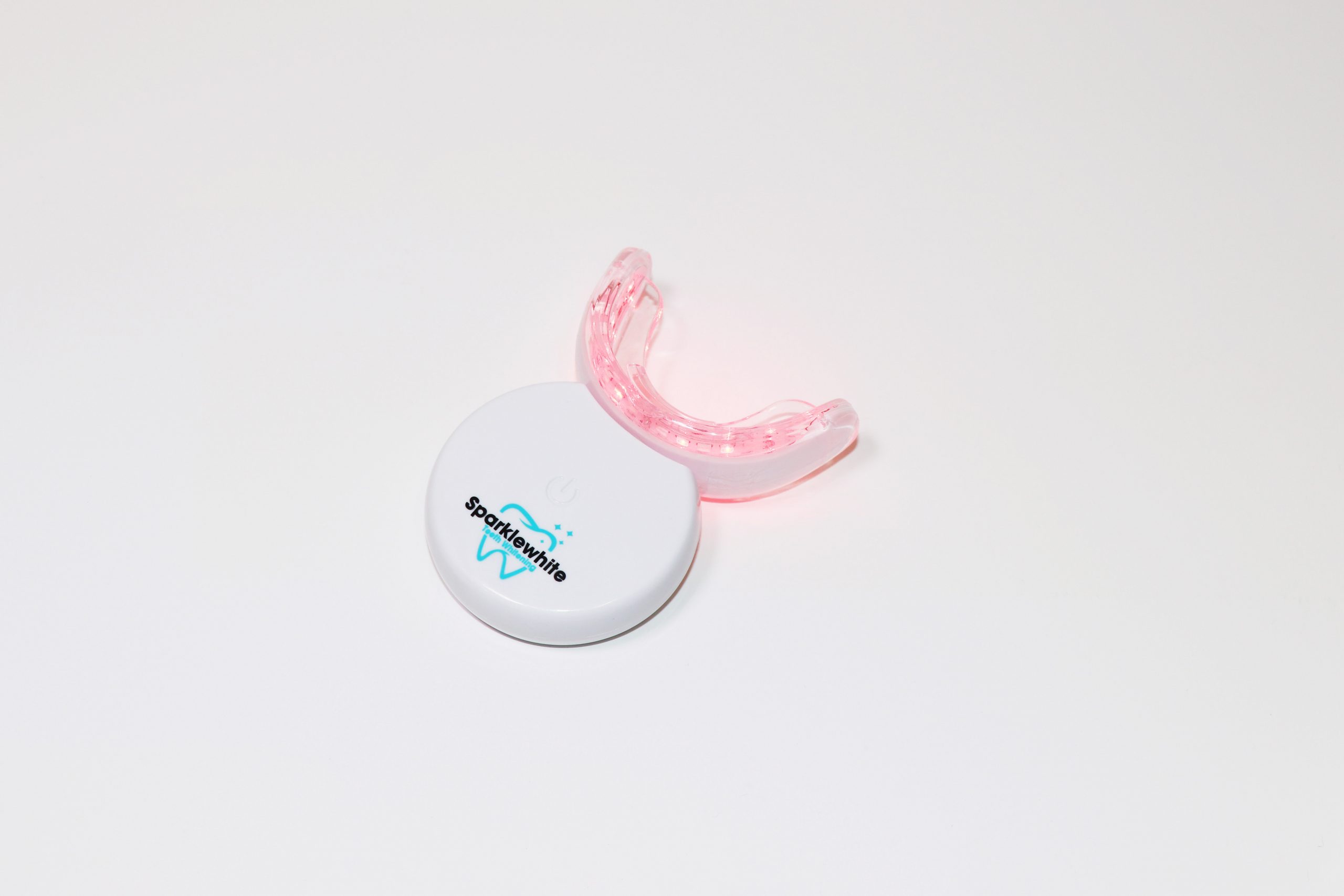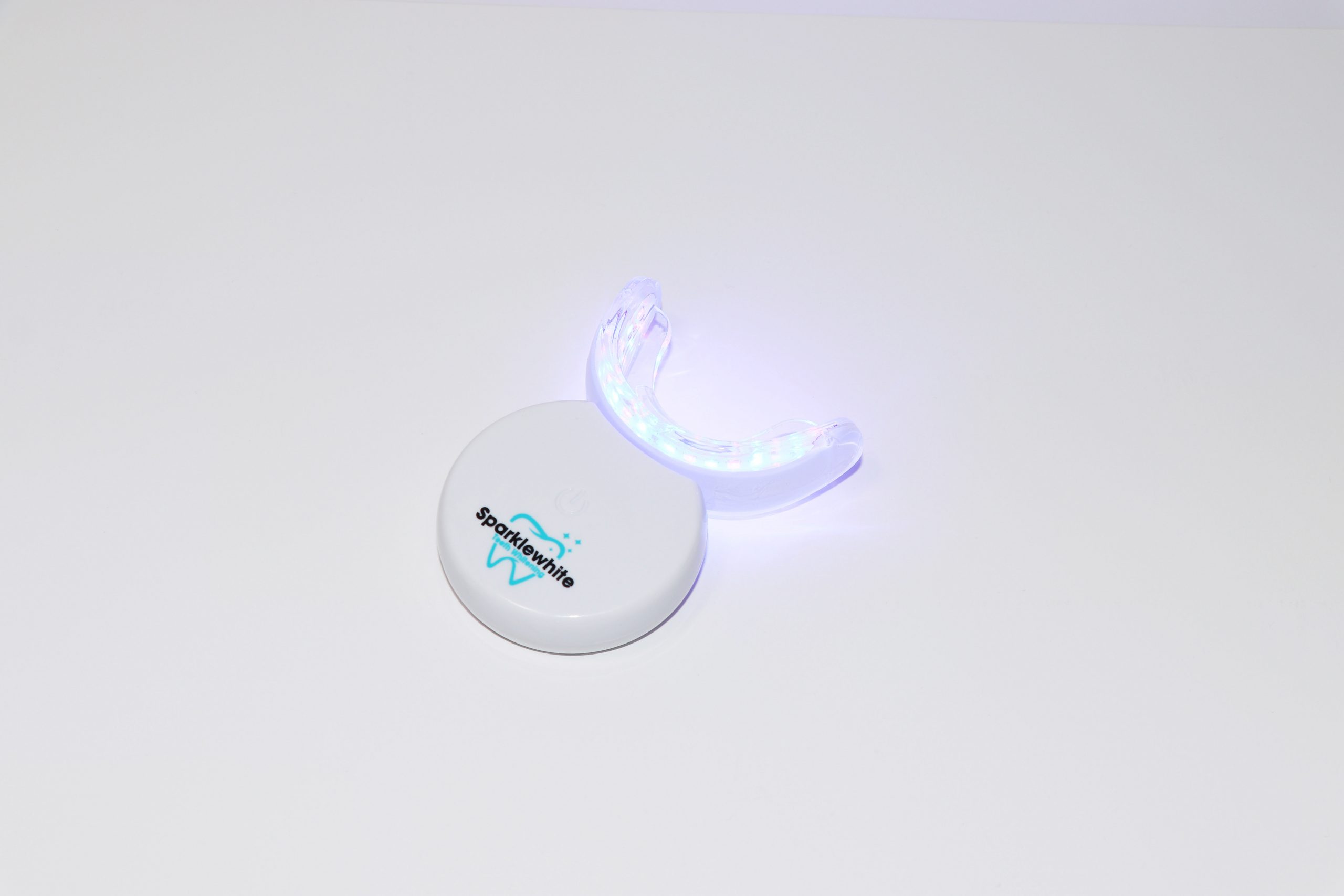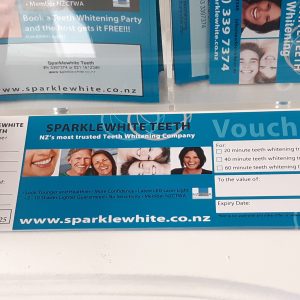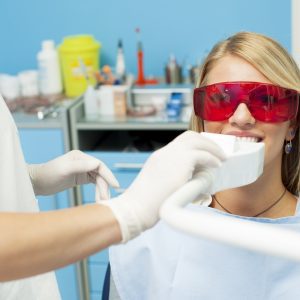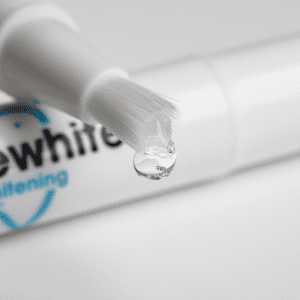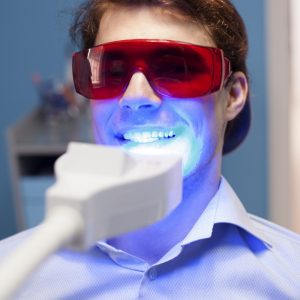A LED Light with 3 colours for Teeth & Gums
Original price was: $99.00.$59.00Current price is: $59.00.
Great to take away on holiday, honeymoon, before an important meeting, a date, or to maintain after the main teeth whitening
Have you tried whitening toothpaste, whitening strips, whitening pens from the supermarket or over the counter and they just HAVEN'T WORKED?
Well, that's because the gel is not strong enough, toothpaste is too thin & not on your teeth long enough & blocking the tooth pores. The whitening gel needs to absorb into your tooth pores inside the enamel as they hold the stains. The LED light activates the gel & helps push the gel down into the stained pores bleaching out the stains. Your tooth pores are just like your skin pores that absorb pollution.
OUR PROFESSIONAL KIT INCLUDES:
- 1 x LED Activator light for a much quicker result
- LED Activator light incl. 2 batteries
- Instructions
BENEFITS:
EASY EASY EASY TO USE JUST PAINT & GO
- Privacy - yes at home work or car up to you where you are
- Look younger & healthier
- Look & Feel much more confident
- Suitable for 14yrs +
- Painless & SAFE
- Rejuvenates caps, crowns, & veneers
- Great results
- Approximately 20 applications per pen (Approx 40 treatments)
- No messy moulds or whitened gums
- Take it everywhere you go, paint & go
Just paint the gel onto your teeth just like painting your nails, insert the light & away you go doing whatever you like for the day/night
Great to take away on holiday, honeymoon, before an important meeting, a date, or to maintain after the main teeth whitening
NB the gel in our pens is Hydrogen Peroxide 6% which is not as strong as what is used at a professional teeth whitening company at Hydrogen Peroxide 12% due to the NZ Regulations.
All this means is that you need to do a few more treatments over time to achieve the same result.
Know what you are buying online by a regulated teeth whitening supplier & member of the NZCTWA (NZ Cosmetic Teeth Whitening Assoc.)
BENEFITS OF RED LIGHT THERAPY FOR HEALTHY TEETH AND GUMS - AND A BEAUTIFUL SMILE

Red light therapy for bacteria, gingivitis, and gum disease
As we’ve already seen, excess mouth bacteria can lead to a host of serious health issues.
Gingivitis is inflammation of the gums due to an accumulation of plaque (a film of bacteria). While it’s fairly common, particularly in children, if left untreated it can lead to periodontitis (gum disease). One 2011 study examined the effects of red light therapy in conjunction with basic treatment on children with chronic gingivitis. They concluded that while the basic treatment is effective in curing gingivitis, red light therapy significantly improves this effectiveness.
A 2018 study applied red light therapy treatment to 30 subjects with chronic periodontitis, alongside periodontal treatment. Another 30 control subjects were only given periodontal treatment. The red light therapy group showed significantly lower levels of several types of bacteria post treatment than the control group.
Another study from 2018 found red light therapy combined with the traditional treatment of scaling and root planing was significantly more effective for treating severe periodontitis than scaling and root planing alone. A 2019 study involving patients with chronic periodontitis showed similar results. See similar findings here and here.
One 2015 study used extracted teeth to measure the effectiveness of both red and near-infrared light on Enterococcus faecalis, a type of bacteria that is generally found in the digestive tract of healthy people, but that can cause serious health issues in other parts of the body. E. Faecalis is a major cause of root canal failure, partly because of its high resistance to disinfecting agents. The extracted teeth were incubated with E. faecalis for two weeks, after which they were treated with a red LED lamp or a NIR diode laser. The study found that both treatments significantly reduced the bacterial count (compared to the control group). Red light was found to be slightly but significantly more effective than the NIR laser.
Red light therapy for tooth, gum, and bone regeneration
In many cases, patients who have had teeth extracted must wait for the jawbone and alveolus (the socket the root of the tooth fits into) to heal before placing implants. In a 2019 study, researchers found red light therapy treatment to significantly accelerate the regeneration of soft tissue and bone.
A 2020 study looked at the effects of red light therapy on pulpotomy of primary molars in children aged five to eight. Pulpotomy is a procedure done to save decaying baby teeth (and, less commonly, adult teeth), by removing infected pulp from under the tooth’s crown. The study found that red light therapy produced statistically significant favorable outcomes post-pulpotomy. Similar results can be found in this 2014 study as well as this one from 2015.
Red light therapy for oral wounds and ulcers
Aphthous stomatitis or ulcers, more commonly known as canker sores, affects 20% of the population to varying degrees. Most people only get them sporadically, although for some they can be a recurrent problem. This 2014 study and this 2019 study both demonstrate red light therapy to be effective in reducing pain associated with canker sores, as well as healing time.
Denture stomatitis (DS) is a common inflammatory condition affecting denture wearers and caused by candida (yeast) infection. One 2004 study found that red light therapy had an effective fungicidal effect, and researchers concluded it to be a valuable treatment option for DS, especially given the high recurrence rate of the condition. A 2015 study produced similar results.
Oral lichen planus (OLP) is a chronic inflammatory condition affecting the mucous membranes of the mouth. It may present as white patches, red, swollen tissue, or open sores, and it can cause significant pain and discomfort. There is currently no cure, and treatment is focused on diminishing the symptoms. In 2017, researchers conducted a systematic review of six studies investigating the efficacy of red light therapy on OLP. They found the therapy to be effective in treating the condition in all six studies, with no adverse effects. They concluded that red light therapy could be used as a safe alternative to corticosteroids for the management of symptoms.
A 2015 article discussing the role of red light therapy in periodontal and peri-implant wound healing asserts that RLT is “being gradually integrated with mechanical therapy to enhance subsequent wound healing by achieving thorough debridement, decontamination, and tissue stimulation”.
Red light therapy for oral complications due to cancer treatment
Many cancer treatments can have oral side effects, including oral mucositis, radiation dermatitis, lymphedema (swelling), burning mouth sensation, dry mouth, difficulty swallowing, and taste alteration. Several studies and reviews (such as this one and this one from 2018 and 2019, respectively) have been conducted on the efficacy of red light therapy in alleviating these and other side effects of cancer treatment. Researchers have concluded that red light therapy is a safe and time-saving method of managing the oral complications of cancer therapy. This can result in a higher quality of life for patients, as well as greater adherence to treatment.
Red light therapy for orthodontic tooth movement
One of the biggest downsides to orthodontic treatment is the sheer amount of time it takes to achieve the perfect smile. Not only is it a drag for the patient (ask any teenager), long treatment time can lead to complications such as cavities, root resorption, and gum recession. Luckily, recent research has shown red light therapy to be quite effective in speeding up the movement of teeth thus shortening orthodontic treatment. This 2020 review of 11 studies on red light therapy and orthodontic tooth movement found the treatment to statistically accelerate tooth movement in 8 of the 11 studies. Other studies and reviews demonstrating this effect can be found here, here, and here.
Red light therapy for pain and swelling related to dental procedures
It’s near impossible to discuss orthodontics without touching on the topic of pain. Anyone who has had braces surely remembers the excruciating soreness after a tightening, not to mention the irritation of the inner cheeks, lips, and gums. Red light therapy appears to show some promise in its ability to reduce both spontaneous and chewing pain related to orthodontic treatment, according to studies such as this one from 2015 and this one from 2017. While further research is necessary, there is a large body of research supporting the effectiveness of red light therapy for treating various types of pain.
Root canals are one of the most feared dental procedures due to the pain associated. We’re happy to report some promising news: it appears red light therapy is effective in treating postoperative pain related to the procedure. In one 2017 study, 36 patients were split into two groups, the first receiving post-op red light therapy and the other receiving a placebo. Those who underwent the red light therapy treatment experienced significantly reduced pain in the first four days after the root canal procedure. A 2019 review of the current research also concluded that red light therapy is a promising treatment option for root canal-related pain management.
Another study from 2018 found red light therapy to be effective in reducing postoperative pain in patients with molar pain caused by apical periodontitis (an inflammatory lesion around the apex of the root of the tooth). A 2015 meta-analysis also found red light therapy to be effective in reducing pain after molar surgery (as well as swelling), as did this 2016 study.
Red light therapy for tooth sensitivity
There are many causes of tooth sensitivity, also called dentin hypersensitivity (DH). These can include gastroesophageal reflux, tooth grinding, overconsumption of acidic foods, tooth decay, broken or chipped teeth, and gum recession, and of course, teeth whitening products. And given that teeth whitening has quickly risen a multi-billion dollar industry, it’s no wonder people are experiencing tooth sensitivity more than ever before.
Luckily, recent research has shown that red light therapy can help. One 2016 study investigated the effects of both red light and near-infrared (NIR) light treatments on tooth sensitivity following an in-office bleaching procedure. Both treatments were significantly more effective at reducing sensitivity than the placebo. Interestingly, they found NIR light to be more effective than red light after 24 hours, but the results were comparable after 48 hours. Similar results were found in this 2017 case study.
A 2019 study found red light therapy to be effective at reducing tooth sensitivity when combined with potassium nitrate (the active ingredient in toothpaste for sensitive teeth). The combination of treatments was more effective than either treatment alone. A similar 2019 study, however, found both red light therapy and potassium nitrate to be effective at reducing sensitivity, but this effect was not increased by using both together.
Finally, in this 2020 study, researchers investigated the effects of red light therapy combined with a fluoride varnish for reducing tooth sensitivity in patients with molar-incisor hypomineralization (MIH). MIH is an enamel defect usually affecting children under 10. They found the combination of treatments to be effective in reducing sensitivity, with the fluoride varnish having a late-onset effect and red light therapy having a more immediate effect.
WHAT ARE THE RISKS AND SIDE EFFECTS OF RED LIGHT THERAPY?
One of the reasons red light therapy is being so extensively studied as a treatment for a wide variety of illnesses and health issues is because of its impressive safety profile. In fact, researchers have found no major risks or side effects associated with the treatment. Some users have reported slight temporary redness in the targeted area as well as mild eye discomfort from the brightness of the lights. The use of safety goggles can help mitigate the latter effect.
